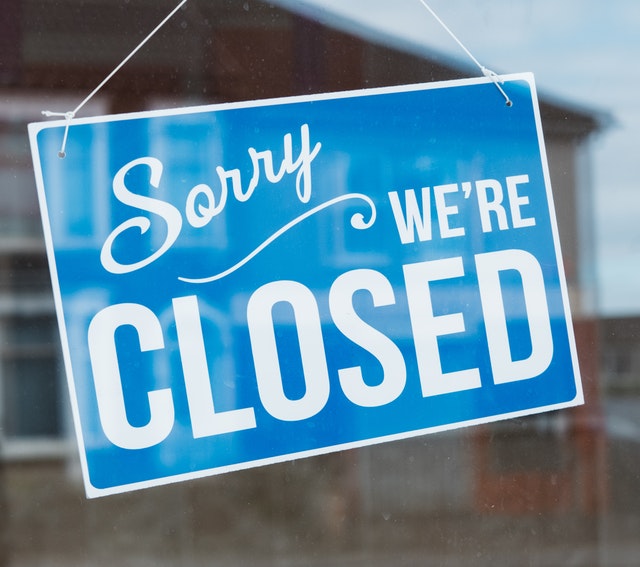If you have been in business for any length of time, whether your company is big or small, you’ve likely dealt with differing levels of risk management relevant to specific points of your business growth. Perhaps, this topic is not something you’ve thought about yet, or you are in the early stages of your business. Still, the truth is this: not having a business continuity plan is like taking a long road trip without caring about the condition of your vehicle or the odds you will make it. Let’s take a look at some basics to help support your knowledge about having a business continuity plan.
Understand a Business Continuity Plan
A business continuity plan (BCP) is a broad one that covers a company’s strategy for continuing business operations if major disasters, societal unrest, or any other unplanned event threatens the day-to-day operation of the business. And, as business owners, we find ways to make our businesses better, right? Well, this is an essential part of that goal.
The BCP lays out all of the conditions that need to be realized if you cannot conduct business as usual. Think about your IT operations, for example, or if you run a company with a contact center, do you have a backup site where your call center agents could be relocated safely and with minimal interruption to your operations?
Keep in mind, that you don’t need to duplicate your entire operation; this plan is meant to do the minimum temporarily. However, having a plan that is as effective and efficient as possible is a good idea. Consider getting some advice from a consultant if you need to. They could help you identify the minimum operations your business needs to continue with an acceptable level of service should the unforeseen occur.
Additionally, I recommend having a way to create a Balanced Scorecard for Sustainable Business Success. With a tool like this in your arsenal, you can get a clear picture of what is working well in your business and where you could think about making changes. Well-fitting software can create a strategy map for you based on your balanced scorecard so that you can see exactly what you need to do to achieve your objectives.
Know Why It’s Essential to Protect Yourself with Cyber Security
Cybersecurity is something that is in the news almost every day. From Donald Trump’s tweets about Obama wiretapping him to how Russia allegedly used cybercrime to influence the 2016 election, cyber security has never been more prominent in our social and political spheres. In addition, issues such as Wikileaks and global surveillance have also brought the issue of cyber security into common discussions. And, yet, despite all this noise, many people do not know how to protect themselves and their businesses online. This is why it’s vital to use reliable cyber security like the cyber ally program, which can assist your business with getting your online platforms’ security back on track.
Creating a Solid Plan
Your department or business managers can complete the steps we’re going to work through here in any order based on how you’ll approach the formulation of your BCP. Just like your business plan, this plan should be considered a “living document” and be regularly reviewed and amended as your business evolves.
BUSINESS IMPACT ANALYSIS (BIA)
Conducting a BIA is an excellent place to start formulating any solid BCP. When you run your BIA, it refers to the process of understanding how a significant event could interrupt your business. Natural disasters could cut off electricity to your production plant, or if you manage a home-based business doing tax consulting, a tornado could mean you’re out of data connections or telecommunications. You can see that this sort of critical thinking doesn’t just apply to large businesses; even small to medium-sized are impacted by lapses in business continuity.
BUSINESS INTERRUPTION
As you begin running your BIA, you want to think about what a business interruption event means to your business, and clearly define those processes (which you should be able to take direction from your business plan, hint hint). This part of your critical thinking also covers a secondary but crucial element of your overall strategy, business risk planning. There are potential insurance implications here, so be sure and check with a business consultant or financial planner, just in case.
DISASTER RECOVERY
As the name suggests, this is the plan that your company will use to bring operations back online after a disaster or business interruption event. Here you can rely on local intelligence, for example, if you live in an area prone to earthquakes or tornados. Based on historical precedence, you can formulate a plan that is responsive to your specific conditions.
OFFSITE PLANNING
This level of planning is particular to specific businesses as not every type of business will have to think about offsite planning. But suppose you operate a logistics or supply chain business, a business with a contact or call center, or a company that relies on conducting ongoing strategic planning like emergency or response services. In that case, you will need to plan for offsite operations.
BRING IT ALL TOGETHER
Once you’ve created all of these foundational assessments, impact plans, risk assessments, and any other type of plan that’s relevant to your business, it’s time to complete your final BCP. That last plan will be the comprehensive process management guide for you, managers, and team members. If you’ve done the job correctly, your company should be able to run efficiently, if not at 100% capacity.
TEAM TRAINING
All the planning, forecasting, and plotting in the world will mean nothing if your teams don’t know how to implement these plans. Consider moving away from the traditional corporate view that these plans are intended for the “top management” or “eyes only” audience. Honestly, the more of your team members who know how to access and activate these plans, the better it will be for you.
With all things being equal, you should almost be able to “flip a switch” and have your business continue operating, and to a certain degree, it can be that easily done. But as every business owner knows, it takes a lot of hard work to make something look easy, and the more you train your staff and team leaders in your BCP, the better it will work in a real emergency.
THE LEGAL STUFF
Your clients and customers have a reasonable expectation that you have taken all necessary steps to secure their business interest in your company. In some cases, there might be legal implications that could work heavily against you if you don’t have sufficient planning in place to keep your client’s property safe. So take some time to learn more about business and commercial litigation as it applies to this type of business planning.
 Women's Life Link Be Well, Be Happy, Be YOU!
Women's Life Link Be Well, Be Happy, Be YOU!






